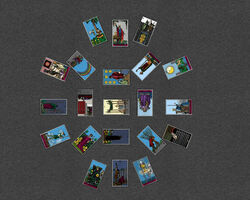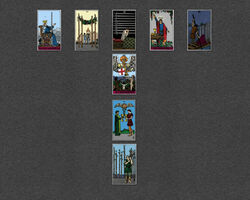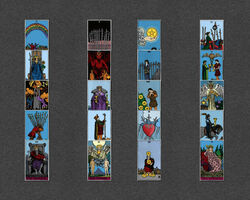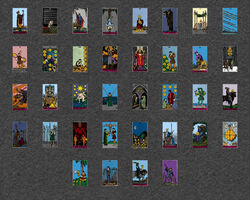Tarot Layouts (also known as Cartomancy Spreads)
Here you will find a list of tarot layouts, otherwise known as cartomancy spreads. You can use these spreads to do tarot readings with physical tarot cards, or you can automatically run a tarot reading with our free online tarot card reading generator.
Cut the Deck
Cutting the Deck is probably the oldest form of cartomancy, dating back to the 16th century at least. People would cut the deck to pull one card, essentially to test whether their luck was running high, before making a decision. Similar principles led to the development of solitaire games in the 17th century.
Triptych (with Reversal)
Three cards laid out in a row tell the past, present, and future.
Triptych
Without reversing the cards, tells the past, present, and future.
Celtic Cross (with Reversal)
The Celtic Cross method of reading tarot cards is probably the most common one in use today. It was popularized by A. E. Waite in his book The Pictorial Key to the Tarot, which was published in 1911. There are many variations on this spread, but the one presented here is based on the description provided by Waite, updated to be more readable to a modern audience.
Celtic Cross
The Celtic Cross method of reading tarot cards is probably the most common one in use today. It was popularized by A. E. Waite in his book The Pictorial Key to the Tarot, which was published in 1911. There are many variations on this spread, but the one presented here is based on the description provided by Waite, updated to be more readable to a modern audience.
The Grand Star (with Reversal)
Excerpted from "Fortune Telling by Cards" by P.R.S. Foli, 1915.
Mme. Le Marchand's How to Tell Fortunes from the Cards
Excerpted from Le Marchand's Fortune Teller and Dreamer's Dictionary, Madame Le Marchand, 1863.
Margarita de Borja's Twenty Card Spread
Margarita de Borja was tried by the Spanish Inquisition in 1615 for sortilege with cards. Here is a record of that trial.
Madame Le Normand's Cartomancy Spread
These directions were printed in a booklet that accompanied a fortune telling deck with French pips called "Le Normand Karten," as reported by Mrs. John King Van Rensselaer.
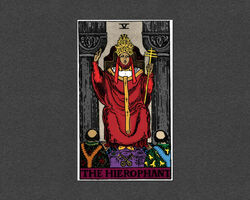
.jpg)
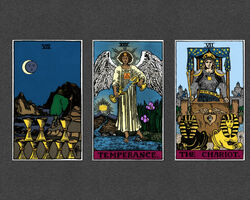
.jpg)

